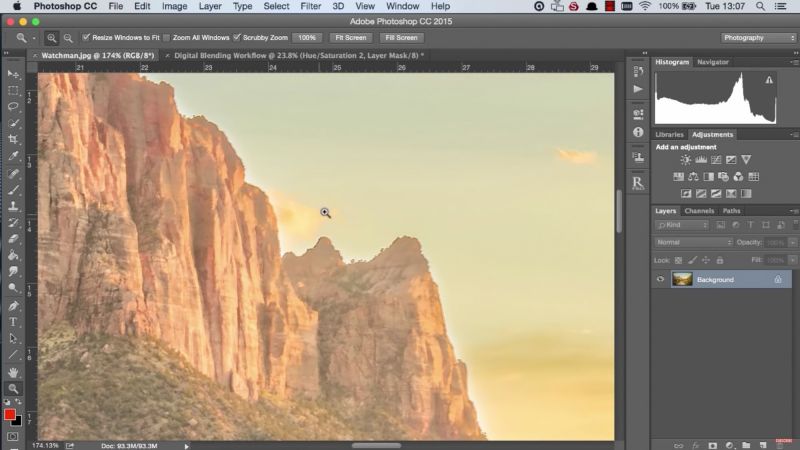
Jimmy McIntyre often takes a common problem most people leave unresolved due to fine complexities and resolve them in a way that leaves you wondering if it was all that complex to begin with. He has this natural ability to take your hand like a small child and break down the more detailed processes in post-processing and making the reveal of how it’s done like a little journey. Earlier this year, he released a video explaining how to use blending modes to totally revamp your workflow, which really resonated with us, and one of his latest offerings is much the same.
If you’ve got an interest in landscape photography, perhaps real estate photography, and of course, various other types that may require bracketing and blending, you are aware that while Lightroom and Photoshop both have the ability to ‘auto-blend’ multiple exposures, they won’t leave a discerning photographer with a finished product. In fact, the manual ways of doing things often yield far more pleasing results. But how does one do those manual ways? That’s what Jimmy McIntyre works on here.

As part of a new series called ‘Challenge Jimmy’, where Jimmy will take submissions from viewers who are having a hard time processing a particular image and then try his hand at it, the first example is a high contrast exposure blending scenario: a golden hour sunset in a canyon. This means shadowed and less saturated foreground with a gradually brighter background culminating in a bright sky. The mountain ridges and tree leaves pose a difficult situation where dark meets bright, and when you try to blend two images where one is much brighter than the other, those particular areas are often problematic; you can find halos and hard fringing.

In the steps described, Jimmy demonstrates smoothly and clearly how to go about resolving all these types of challenges so you’re left with an image as natural as you’d like. Yes, part of this is advertising for his panel Raya Pro, but do not fret if you’re not a Raya user as he goes into detail on the manual ways of doing it all as well.
One of the great things about this video, and indeed many of McIntyre’s videos, is how much you can learn from the in-between steps. For example, as Jimmy shows you how to manipulate the images to reduce fringing and so on, you see how he moves between menus and get a very good idea of practical and effective ways to lay out your software panels, as well as navigate them. And then along the way, you’ll pick up different uses for various tools you may never have considered before.
Check out his site, as well as how to get Raya Pro.





Get Connected!